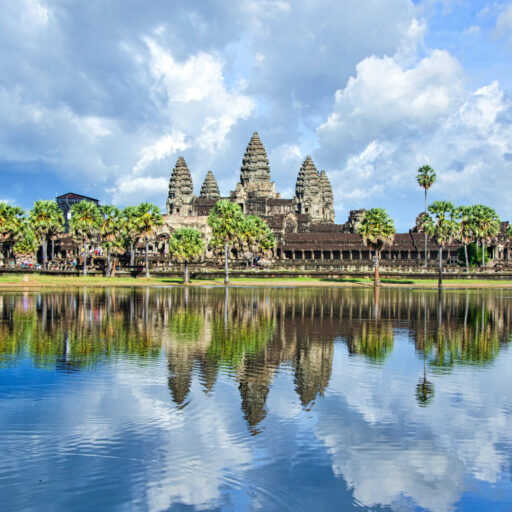
Deep within the Angkor Archaeological Park in Cambodia lies one of the most atmospheric and iconic ruins of the Khmer Empire—Ta Prohm Temple. Known worldwide for its haunting beauty and massive tree roots that envelop ancient stone structures, Ta Prohm is a place where nature and history exist in remarkable harmony.
A Temple Frozen in Time
Built in the late 12th century by King Jayavarman VII, Ta Prohm was originally known as Rajavihara, meaning “royal monastery.” It was constructed as a Buddhist monastery and university, dedicated to the king’s mother, and housed more than 12,000 people, including monks, priests, and workers.
Unlike many other temples in the Angkor complex that have been restored, Ta Prohm has been left largely in the state in which it was found. This decision was intentional, allowing visitors to witness the powerful forces of nature as they slowly reclaim the man-made.
The Famous “Tomb Raider Temple”
Ta Prohm gained international fame after being featured in the 2001 movie Lara Croft: Tomb Raider, starring Angelina Jolie. Since then, it’s often referred to as the “Tomb Raider Temple,” drawing thousands of tourists eager to walk in the footsteps of adventure.
But long before Hollywood discovered it, Ta Prohm had already captivated historians and explorers with its mysterious charm and photogenic beauty.

Nature’s Masterpiece
The most iconic feature of Ta Prohm is the enormous spung (silk-cotton and strangler fig) trees that grow from the temple’s towers and galleries. Their thick, twisting roots coil around the stone like living sculptures, creating a powerful visual symbol of nature’s resilience.
These trees, while visually stunning, also threaten the structural integrity of the temple. Preservation efforts aim to balance the need for conservation with the desire to maintain Ta Prohm’s unique, overgrown character.

A Glimpse into the Past
Wandering through Ta Prohm’s crumbling corridors and moss-covered courtyards, visitors can imagine what the entire Angkor complex might have looked like when European explorers first encountered it in the 19th century. The temple’s carvings, many still visible, depict scenes of everyday Khmer life, celestial dancers (apsaras), and Buddhist iconography.
Though time and the elements have taken their toll, Ta Prohm’s spiritual atmosphere remains strong, offering a rare and moving experience for those who visit.
Visiting Ta Prohm Temple
Ta Prohm is located about 1 kilometer east of Angkor Thom and is part of the Angkor Wat circuit tour. Due to its popularity, it’s best to visit early in the morning or late in the afternoon to avoid crowds.
Quick Visitor Info:
- Location: Angkor Archaeological Park, near Siem Reap, Cambodia
- Entrance Fee: Included with the Angkor Pass
- Opening Hours: 7:30 AM – 5:30 PM
- Best Time to Visit: November to February for cooler weather and better light for photography
Why You Shouldn’t Miss Ta Prohm
Ta Prohm is more than just a photo opportunity—it’s a living testament to the rise and fall of the Khmer Empire and a powerful reminder of nature’s ability to reclaim even the greatest human achievements.
Whether you’re drawn by its cinematic legacy, its raw natural beauty, or its deep historical roots, Ta Prohm is a place that lingers in the heart long after you leave.

Leave a Reply